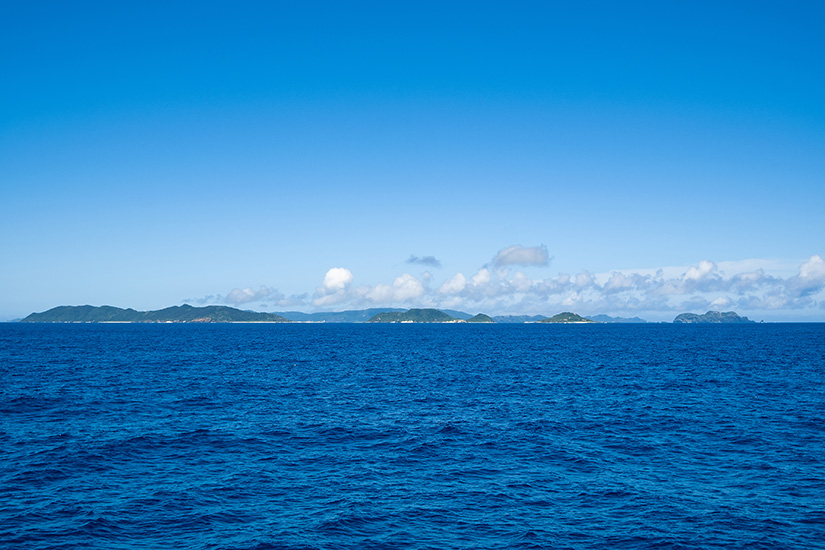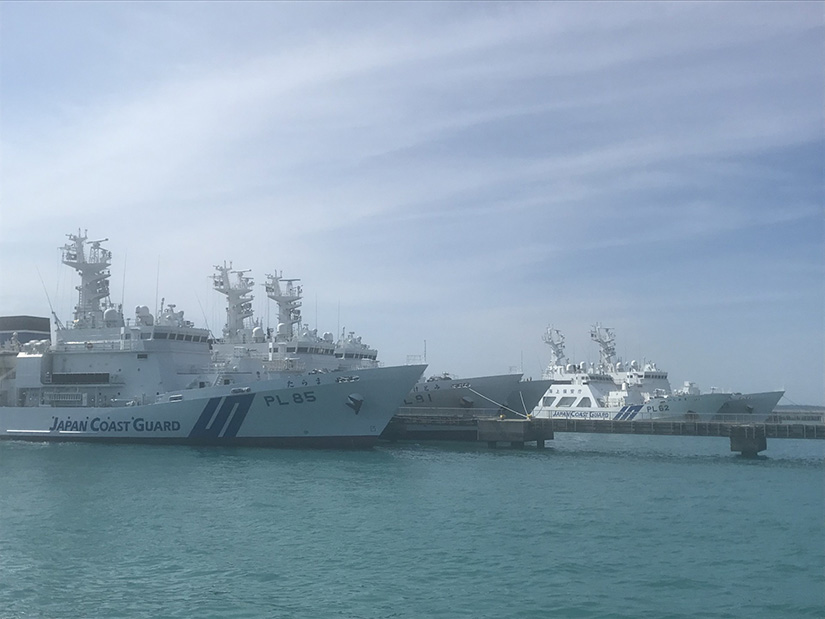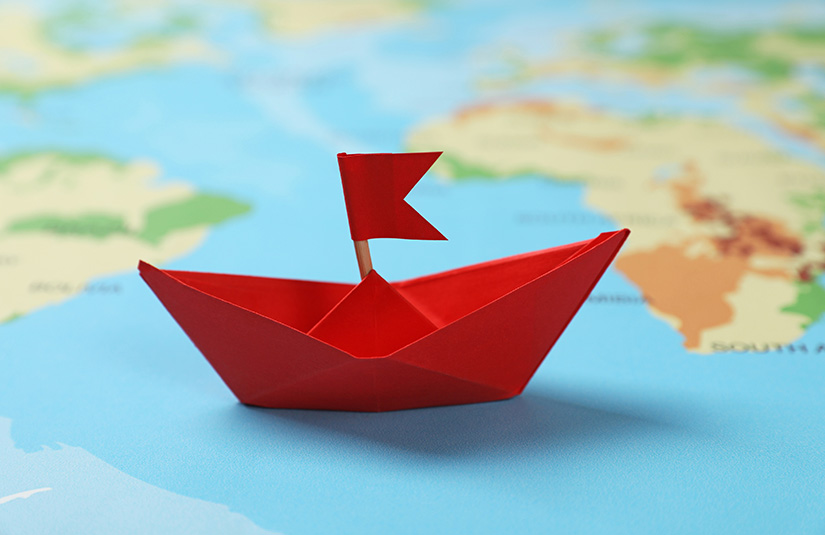Introduction
In the waters surrounding the Senkaku Islands in the East China Sea, incursions into Japanese territorial waters by vessels belonging to the China Coast Guard (CCG), as well as their persistent presence in the contiguous zone just outside those waters, have become a near-daily occurrence. This trend is widely attributed to China’s reorganization of its maritime agencies and the incorporation of the CCG into the People’s Armed Police, which operates under the command of the Central Military Commission—resulting in enhanced capabilities and a more assertive posture.[1]
Since around 2020, CCG vessels have maintained a presence in the area on more than 330 days per year, routinely patrolling the contiguous zone adjacent to Japan’s territorial waters.[2] There have also been incidents in which these vessels approached Japanese fishing boats operating within Japan’s territorial waters, attempting to interfere with their activities for extended periods. In some cases, the CCG has used automatic identification system (AIS) signals to deliberately broadcast its presence.[3]
In response to this situation, Toshi Yoshihara, a senior fellow at the Center for Strategic and Budgetary Assessments and former John A. van Beuren Chair of Asia-Pacific Studies at the Naval War College, stated in an interview published on April 5, 2025, by the Sankei Shimbun that China is attempting to normalize its “constant presence” in the Senkaku area in order to undermine Japan’s administrative control and create a de facto framework for future joint management.[4] Following this, the South China Morning Post on April 18 reported that President Xi Jinping, during a visit to the Shanghai headquarters of the CCG in November 2023, ordered the agency to “strengthen sovereignty over the Diaoyu [Senkaku] Islands” and that China is gradually eroding Japan’s effective control through the use of the CCG and maritime militia.[5]
This paper examines China’s strategy and analyzes the strategic effectiveness of Japan’s restrained response[6] —particularly the policies adopted by the Japanese government and the Japan Coast Guard (JCG)—from both legal and operational perspectives. It also evaluates the strengths and limitations of this approach in terms of maintaining sovereignty over the long term.

Undermining Japan’s Effective Control?
In response to China’s strategy of asserting sovereignty through the persistent presence of CCG vessels, Japan has adopted a clear and consistent stance on the Senkaku Islands, relying on law enforcement by the JCG as its primary means of response. Since incorporating the Senkaku Islands in 1895 under the principle of terra nullius, the Japanese government has consistently maintained that the islands are an inherent part of its territory and that no territorial dispute exists.[7] When Chinese vessels enter Japan’s territorial waters, Tokyo lodges formal protests and explicitly rejects China’s unilateral claims.
This position has proven effective in countering China’s efforts to bolster its sovereignty claims through the presence of CCG vessels, as reported by the Sankei Shimbun. Basically, China’s assertions based on historical and geographical grounds lack legal standing. Besides, the fact that China did not claim sovereignty over the islands until 1971 suggests the acquiescence of Japan’s effective control, contradicting its current claims.[8] China’s incursions may be seen as attempts to overcome this legal weakness, but Japan’s refusal to recognize such claims fundamentally blocks any legal foothold for Chinese sovereignty.[9] Thus, while Japan’s approach may appear restrained, it can be understood as a form of “proactive restraint” grounded in long-term strategic thinking.
Can the increased presence of Chinese vessels be interpreted as a shift in effective control? Under international law, effective control entails more than physical presence—it requires the exercise of sovereign authority through legislative, administrative, and judicial acts. [10] Since incorporating the islands, Japan has consistently implemented administrative measures, including fisheries management, law enforcement, and taxation.[11] The JCG continues to patrol the surrounding waters, warning Chinese vessels that enter Japan’s territorial sea that they are in violation of international law and ordering them to leave. These actions constitute the exercise of sovereign authority and are clear evidence of effective control.
The United States also recognizes Japan’s administrative control over the Senkaku Islands. Article V of the Treaty of Mutual Cooperation and Security between Japan and the United States of America applies to territories under the administration of either Japan or the United States, and successive US administrations—including the current Trump administration—have repeatedly affirmed that the Senkaku Islands fall within the scope of the application of Article V.[12] This recognition underscores that Japan retains administrative control and that China’s maritime presence has not eroded Japan’s effective control.
In this regard, while Yoshihara’s comments in the Sankei interview rightly highlight the need for vigilance regarding Chinese activities, they also appear to underplay the operational realities and strategic significance of Japan’s law enforcement efforts.[13] Japan’s response holds strategic significance in both static and dynamic aspects: the static aspect of maintaining effective control under international law, and the dynamic aspect of stabilizing the regional order while avoiding accidental conflicts and escalation. Importantly, this restrained posture is not merely about maintaining the status quo; it also plays a vital role in preventing accidental conflict and building international trust. Understanding Japan’s strategic choices requires recognizing this dual function, which is grounded in the steady accumulation of on-site responses and forms the institutional and operational basis for the existing “managed state of tension,” which I discuss in the section below.
Crucially, the mere opportunistic incursions by CCG vessels do not, in themselves, undermine Japan’s effective control. Japan’s law enforcement operations in territorial waters are an extension of its sovereign governance, and the JCG’s continued presence significantly reinforces Japan’s position. These daily efforts form the foundation for maintaining a stable and controlled maritime environment.

The Strategic Significance of a “Managed State of Tension”
The Japan Coast Guard conducts guard and security operations around the Senkaku Islands in accordance with both international and domestic law. Specifically, it conducts surveillance and monitoring in the surrounding waters to deter China Coast Guard vessels from approaching and to prevent incursions into Japan’s territorial sea. When such incursions do occur, Japan issues diplomatic protests while maintaining a unified crisis management posture that enables calm and resolute responses under a clear chain of command.[14]
In recent years, as incursions and close approaches by Chinese vessels have increased, Japan has deliberately framed the issue not as a military confrontation but as a matter of law enforcement. This approach aligns with Japan’s stance that there exists “no issues of territorial sovereignty” and with the rule of law, which is a fundamental principle of the international order. It has also proven effective in garnering understanding and support from the international community.
One key benefit of this approach is the preservation of a framework for managing tensions while avoiding accidental clashes. By refraining from overreacting to provocations and consistently responding in a calm, law-based manner, Japan has helped prevent the escalation of tensions. While such efforts may not yield immediate results, they represent a long-term strategic approach to regional stability. Should escalation occur near the Senkaku Islands, the ripple effects could seriously impact the broader East Asian region.[15] In this context, Japan’s restrained and legally grounded response becomes all the more valuable, contributing to the maintenance of maritime order in the region.
Conclusion
This article examined the effectiveness and limitations of Japan’s restrained response to the growing presence of CCG vessels near the Senkaku Islands. While China pursues a gradual strategy aimed at establishing de facto control, Japan has maintained a consistent legal position and policy framework to uphold its sovereignty.
Although this approach may not yield short-term results, it functions as a form of “proactive restraint”—minimizing friction while aiming to preserve sovereignty over the long term. At the heart of this strategy is the JCG’s law enforcement role, which underpins Japan’s continued control of the Senkaku Islands.
Nevertheless, as Toshi Yoshihara has noted, the ongoing enhancement of China’s Coast Guard capabilities means the risk of Beijing asserting administrative control over the islands remains.[16] Accordingly, Japan must not only maintain its current approach but also evolve it into a more strategic posture—through planned capacity building, deeper coordination with allies, and more robust international communication.

(2025/07/01)
Notes
- 1 For a detailed examination of the development of the China Coast Guard and the tense situation in the East China Sea, see Koichi Sato, “Kaiyo Kyokoku” Chugoku to Nichi–Bei–ASEAN: Higashi Shina Kai, Minami Shina Kai o meguru kobo, Keiso Shobo, 2023, 61–83 and 111–165.
- 2 Japan Coast Guard, Kaijo Hoancho repoto 2024, May 2024.
- 3 “Gunkan-nami 76-miri ho, Chugoku no Kaikeisen ga Senkaku shuhen ni, 1 nenkan ni 355 nichi koko,” Yomiuri Shimbun, January 2, 2025.
- 4 Yoshihisa Komori, “Chugoku wa Senkaku “Kyodo kanri sengen” junbi: Gyomin yosou minpei no joriku mo kento, Toshi Yoshihara-shi intabyu,” Sankei Shimbun, April 5, 2025.
- 5 Julian Ryall, “Julian Ryall, “Is China planning to declare shared control of Diaoyu Islands with Japan?,” South China Morning Post, April 18, 2025.
- 6 See note 2. The Japan Coast Guard describes its posture as “calm and resolute, based on international and domestic law.”
- 7 Ministry of Foreign Affairs of Japan, “Situation of the Senkaku Islands,” accessed May 9, 2025.
- 8 Jun Tsuruta, “Understanding the Senkaku Islands through the Materials on the Senkaku Islands Archives Portal,” Senkaku Islands Research and Commentary Site (Cabinet Secretariat), April 22, 2022; for a discussion of China’s “acquiescence,” see Noriyuki Kawamura, “Senkaku Shoto ryoyuken mondai to Nicchu kankei no kozoteki henka ni kansuru kosatsu,” Journal of the School of Foreign Languages, Nagoya University of Foreign Studies, no. 46 (2014): 27–51.
- 9 Tetsuya Toyoda, “Higashi Ajia no ryodo funso ni okeru kokusaiho to chikara to seigi,” Kokusai Kyoyo Daigaku Ajia Chiiki Kenkyu Renkei Kiko Kenkyu Kiyo 4 (2017): 59–70.
- 10 For a discussion on effective control, see Yuji Iwasawa, Kokusai-ho, University of Tokyo Press, 2020, 233. For a deeper discussion, see Tomoko Shimamura, “Kokusai-ho ni okeru ryoiki no ‘jikko shihai,’” Reference, no. 858 (National Diet Library), June 2022: 77–98; as well as Masahiro Miyoshi, “On the Expression of ‘Effective Control,’” Senkaku Islands Research and Commentary Site (Cabinet Secretariat), October 11, 2022.
- 11 Ministry of Foreign Affairs of Japan, “Senkaku Islands Q&A,” accessed May 8, 2025.
- 12 See, for example, “United States–Japan Joint Leaders’ Statement,” Briefing and Statements, The White House, February 7, 2025; for an outline of the announcements made to date, see also Issei Tanaka, “Senkaku Shoto e no Anpo Joyaku go-jo tekiyo o kakunin, Nichibei shuno kaidan: Ryokai shinnyu kurikaesu Chugoku no yokushi nerai,” Sankei Shimbun, February 5, 2025.
- 13 See note 4.
- 14 Kentaro Furuya, “Chugoku no kaijo ni okeru gurezon senryaku to shuhenkoku no taio: Nihon oyobi Firipin o rei ni,” Asian Studies, April 10, 2025.
- 15 See Michael Green et al., Countering Coercion in Maritime Asia: The Theory and Practice of Gray Zone Deterrence, Center for Strategic and International Studies, May 9, 2017.
- 16 See note 4.

